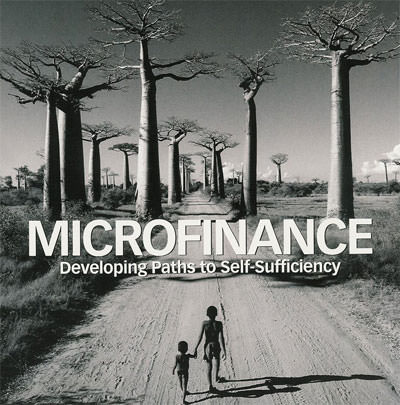Building Financial Security in Developing Countries
Microsaving and Mobile Banking Paving the way for Financial Security
By Melissa Goertzen, Staff Writer
The global financial crisis has led to the rediscovery of a basic tool of personal finance: the piggy bank. Economic uncertainty has placed a renewed focus on the value of building savings in order to achieve financial security. In developing countries, this has meant a growing emphasis on microsavings programs. The idea that savings can combat poverty is challenging decades of research that suggested loans for small-business ventures was the best way to break the poverty cycle.
The Shift Towards Microsaving
The concept of microlending was developed in the early 1980s by Dr. Muhammad Yunus, an economist from Chittagong University. He established microcredit programs at the Grameen Bank as a means to stimulate small-business endeavors in developing countries, which he believed would pull borrowers out of the poverty cycle. Supporters of the programs, including nonprofit groups and financial institutions, preached that “credit was the key to attaining a better life.” In 2006, Yunus won the Nobel Peace Prize for his work.
However, when the global recession hit in 2007, borrowers “defaulted on debts at an alarming rate” and the power of credit in the fight against poverty was questioned by financial analysts and researchers.
Yale economist Dean Karlan suggests that credit is a form of saving down, which means borrowers are saving money to pay down debts. While credit can provide business start-up benefits, it is important not to ignore the flip side of the coin, or saving up, which allows borrowers to build savings accounts to reach goals related to long-term financial stability. Karlan suggests “there’s a common misguided, knee-jerk reaction that if you’re poor, you have no assets to save. People who are poor obviously save less, but they still save.”[pullquote]Microsavings programs have also attracted grants from charitable organizations, including a $500 million grant from The Bill and Melinda Gates Foundation.[/pullquote]
The new emphasis on microsaving has led to increased collaboration between nonprofit groups, including Care International and Catholic Relief Services, and financial institutions in developing countries across Africa and India. The Washington Post reported that “many institutions making microloans are now adding microsavings to their offerings; some have stopped lending money altogether.”
Microsavings programs have also attracted grants from charitable organizations, including a $500 million grant from The Bill and Melinda Gates Foundation.
An Uncertain Future
One of the largest obstacles currently facing microsavings programs is the cost involved. The Washington Post reported that on the business end, growth hinges on the willingness of companies to invest “in a business model with uncertain returns and high costs.” In many cases, banks struggle to generate income from microsavings programs because deposits are infrequent and account balances average at twenty-nine dollars.
A far greater financial hurtle to overcome involves transportation costs to customers, who often live in poor villages miles away from bank branches. In many cases, “the cost of traveling to the branch is greater than the amount they have to deposit.”
To combat the cost of microsavings programs to both businesses and customers, the Grameen Foundation teamed with the microfinance company Cashpor to develop a mobile banking system. The program allows customers to conduct banking using text messages, reducing the number of trips they must make to the physical branch. At the same time, mobile banking reduces operating costs to financial institutions, making microsavings programs more feasible. Hence, there is hope that as technologies improve, microsavings programs will be readily available and accessible to all households throughout developing countries.






























Share the post "Building Financial Security in Developing Countries"